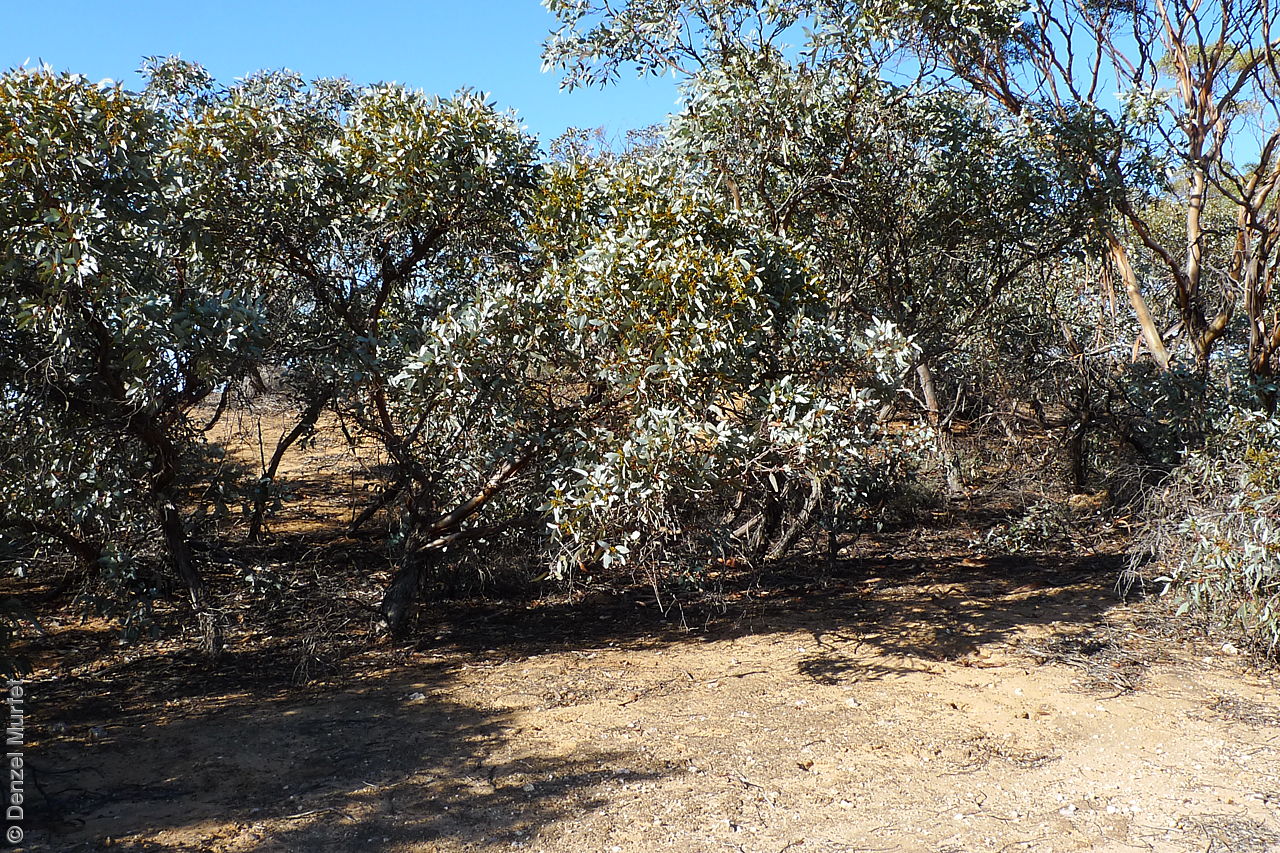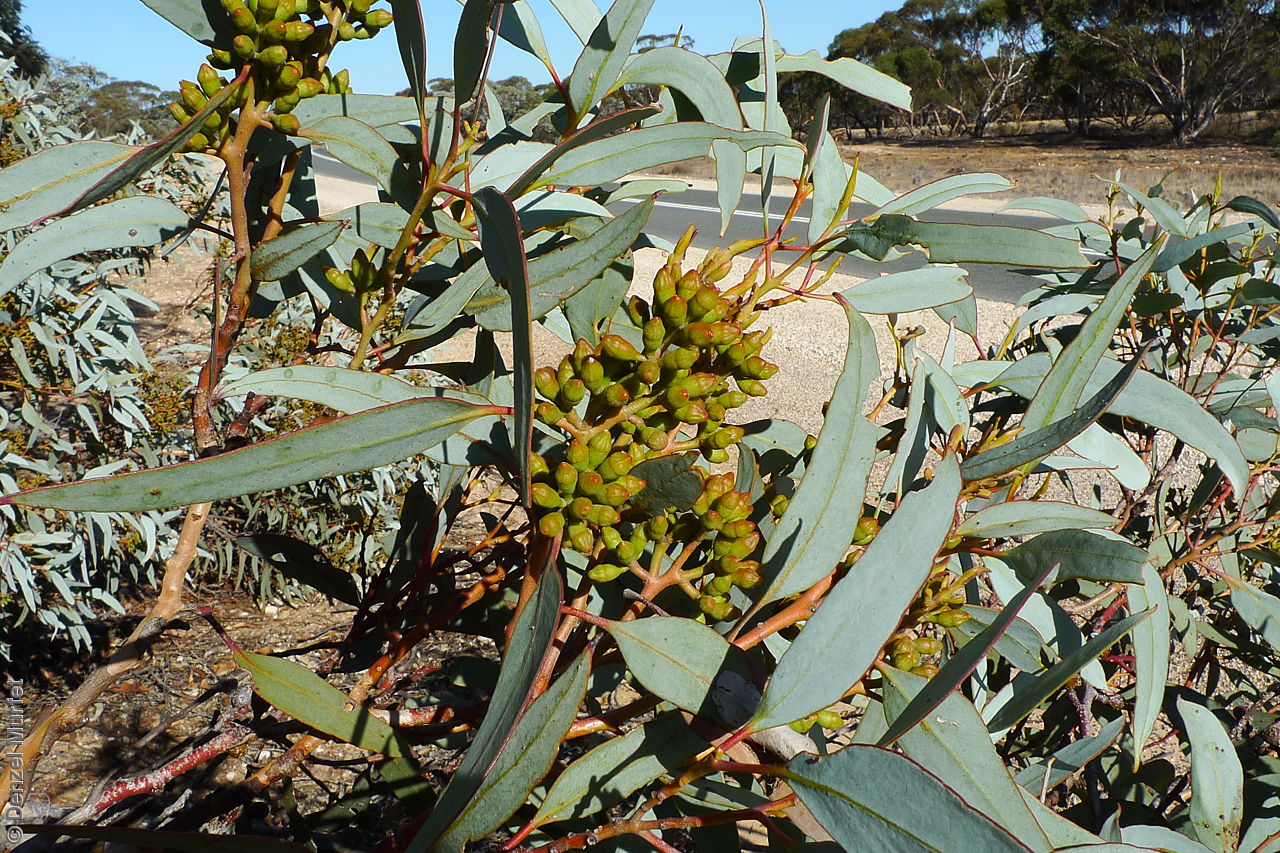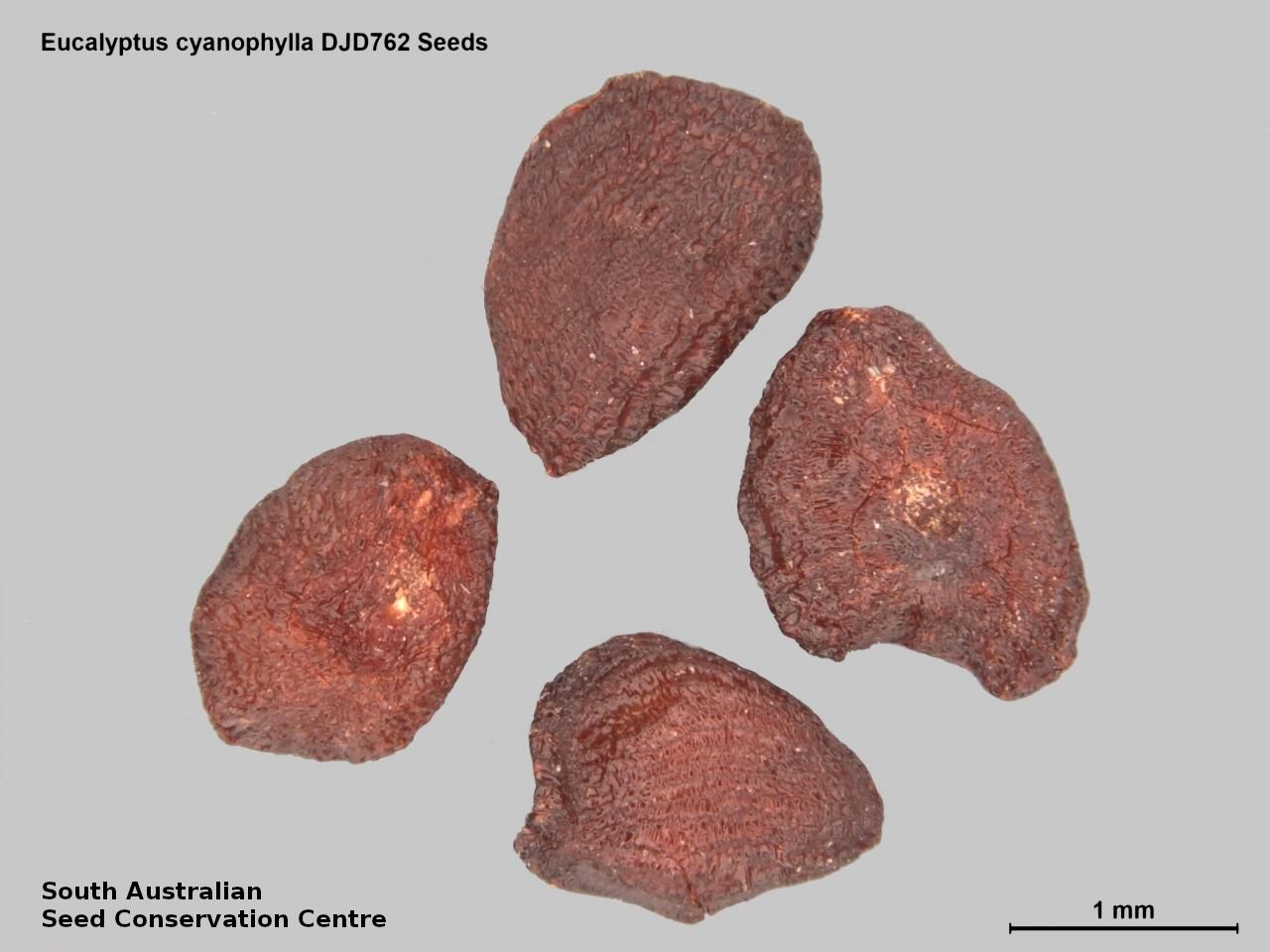




Botanical art
Common names
Murraylands Mallee
Blue-leaf Mallee
Etymology
Eucalyptus from the Greek 'eu' meaning well and 'calyptos' meaning covered; alluding to the cap or lid which covers the stamens in the bud. Cyanophylla from the Greek 'cyanos' meaning dark blue and 'phyllon' meaning a leaf; referring to the blue-grey adult leaves.
Distribution and status
Found primarily in the Murray region in South Australia, growing on sandy or sandy-clay soils, usually overlying limestone, in mallee shrubland. Also found in Victoria. Native. Uncommon in South Australia. Rare
Herbarium regions: Eastern, Murray
AVH map: SA distribution map (external link)
Plant description
Multi-stemmed trees to 6 m tall with smooth grey to orange-brown bark above and shedding in strips, grey-brown and fibrous towards the base. Adult leaves to 160 mm long and 30 mm wide, alternate, broad-lanceolate, dull blue-green to glaucous. Buds and fruit on individual stalks. Bubs with round to cone-shaped, ribbed cap. Flowers cream. Flowering between July and October. Fruits are cone-shaped to cylinder-shaped fruit to 10 mm long and 9 mm wide, ribbed or wrinkled, with disk descending, valves triangular, with narrow points at or just exserted beyond the rim. Seeds are red-brown ovoid seed to 2 mm long and 1.3 mm wide, shallowly reticulate. Seed embryo type is folded.
Seed collection and propagation
Collect seeds between January and December. Collect mature fruits that are dark and hard (difficult to break with a finger nail) with the valves un-open any time of year. Leave the fruits in a breathable container in a dry room for at least a week. This allows the valves on the fruit to open and release the seeds. Separate the seeds by placing all the materials into a bucket and shaking it to dislodge the seeds. Pass the material through a sieve to separate the unwanted material. The finer material will contain both seeds (soft) and frass (hard) usually distinguishable from each other but can be very similar in shape and colour. With finer sieves, the seeds can be separated from the frass but this is not essential for storage or propagation. Store the seeds with a desiccant such as dried silica beads or dry rice, in an air tight container in a cool and dry place. From one collection, the seed viability was high, at 95%. Seeds are non-dormant, viable seed should germinate readily. 1. Germination 100% on 1% w/v agar, 16/8 dark/light, 15°C. 2. Germination 100% on 1% w/v agar 16/8 dark/light, 20°C. See http://data.kew.org/sid
| Location | No. of seeds (weight grams) | Number of plants | Date collected | Collection number Collection location | Date stored | % Viability | Storage temperature |
|---|---|---|---|---|---|---|---|
| BGA MSB | 1,500 (0.94 g) 2,500 (1.58 g) | 40 | 1-Feb-2007 | DJD762 Murray | 1-Aug-2007 | 95% | -18°C |
Number of plants: This is the number of plants from which the seeds were collected.
Collection location: The Herbarium of South Australia's region name.
% Viability: Percentage of filled healthy seeds determined by a cut test or x-ray.